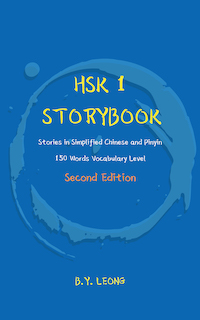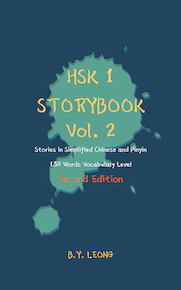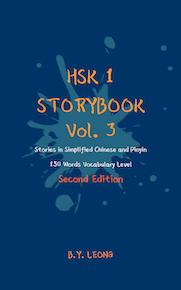You finally decided to stop putting it off – it’s time to start learning Chinese! As you begin looking into study resources and options though, misinformation starts creeping in. Should you believe the naysayers who claim Chinese is impossibly hard for English speakers to learn? Is there truth to the notion that you won’t get far without memorizing thousands of intricate characters? Let’s debunk some stubborn myths holding back students who are considering or just beginning the journey toward HSK 1 fluency.

Myth 1: Chinese is Too Hard to Learn
- Reality: Chinese does have its challenges, like tones and characters, but it’s not inherently harder than other languages. With consistent practice, especially with resources like the HSK 1 Storybook series and Grammar Workbook, learners can make significant progress.
Myth 2: You Must Be Fluent to Pass HSK 1
- Reality: HSK 1 is designed for beginners and doesn’t require fluency. It tests basic vocabulary and simple sentences. Using materials like the HSK 1 Vocabulary List and Audio can effectively prepare you even if you’re just starting.
Myth 3: Learning Characters is Unnecessary for Beginners
- Reality: While learning spoken Chinese is fantastic, understanding characters is crucial for a deeper comprehension. Characters are the building blocks of the language, and starting early with tools like the HSK Vocabulary Writing Practice Sheet can be incredibly beneficial.
Myth 4: Tones Aren’t That Important
- Reality: Tones are vital in Chinese as they can change the meaning of a word. Tools like the HSK 1 Storybook eBook sample provide audio files to help you master the correct pronunciation and tones.
Myth 5: Tones are too difficult – your pronunciation will always be off
- Reality: Tones can seem intimidating as a concept. However, with daily listening and speaking practice, tones become second nature. By beginning with just the four tones in isolation, then two-syllable combinations, mastery happens faster than you expect. Learning pronunciation via songs helps too. You’ll be surprised how quickly your brain adapts to tone recognition and reproduction.
Myth 6: You Can’t Learn Chinese Without Living in China
- Reality: Immersion is helpful, but not necessary. With digital resources, online practice tests, and the global community of learners, you can effectively learn Chinese from anywhere.
Myth 7: The More Words You Know, the Better
- Reality: While a broad vocabulary is helpful, understanding how to use those words is more important. The HSK Grammar Workbooks and Sentence Structure quizzes focus on using vocabulary in context, which is crucial for real-life communication.
Myth 8: Forget reading – you must know 3,000 characters to read anything useful
- Reality: In truth, with knowledge of just 150 characters, you can read 60% of everyday Chinese out there. Road signs, menus, newspapers and web articles use predominantly basic characters. Learning radicals and phonetic components makes characters less daunting by revealing inner structures and patterns. Start with high-frequency characters; over time reading becomes enjoyable as you expand vocabulary.
Myth 9: Speaking fluency requires intricate grammar mastery first
- Reality: Intricacies of Chinese grammar often discourage initial students. However, you can speak conversationally from early on through pattern practice. Just as toddlers talk by mimicking despite limited grammar, beginners converse using simple sentences, then gradually add complexity. Mastering the flexible sentence order, lack of conjugation and slippery particles comes through volume of speaking practice over strict memorization.
Myth 10: All You Need to Do is Pass the Exam
- Reality: Passing HSK 1 is an achievement, but learning a language is about more than tests. Engage with the language in varied ways, such as reading simplified stories in the Chinese Stories for Beginners or practicing with the HSK Online Practice Tests to gain a more profound, practical understanding.
Myth 11: You’re “too old” to learn Chinese.
- Reality: Age is just a number when it comes to learning a language. Studies show that adults can learn languages effectively, often with more discipline and focus than younger learners. So, ditch the ageism and embrace the challenge!
Myth 12: You need to master all HSK levels before starting to converse in Mandarin
- Reality: Learning Chinese, like any other language, is a journey with no specific finish line. While the HSK test offers a structured learning path, it’s not necessary to complete all levels before engaging in conversations or using the language in everyday life. Start with basic phrases and expressions, and gradually build up your vocabulary and grammar skills over time.
Don’t forget, as you dispel these myths and embark on your learning journey, All Musing’s Free HSK Vocabulary Quiz, along with our comprehensive books and online practice exams, are excellent tools to guide you. They are designed not just to help you pass the HSK exams but to enjoy and understand the Chinese language deeply. Check out our resources, and remember, every step forward is a step toward achieving a deeper understanding and appreciation of the Chinese language!
Remember, learning a new language is a journey filled with challenges and rewards. By understanding these common misconceptions, you’re better equipped to approach your study with realistic expectations and effective strategies. 加油 (Jiāyóu) – Keep going! You’re on your way to mastering Chinese.


